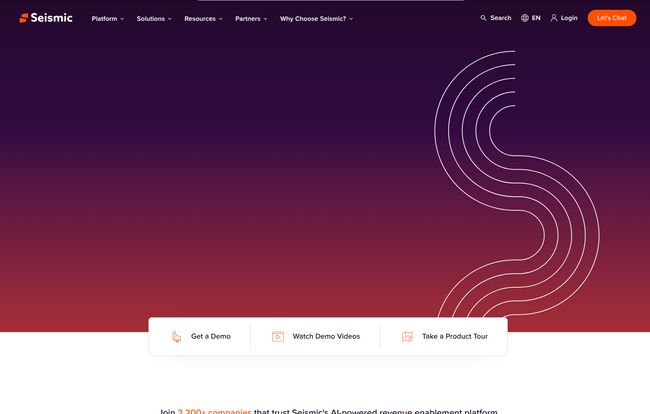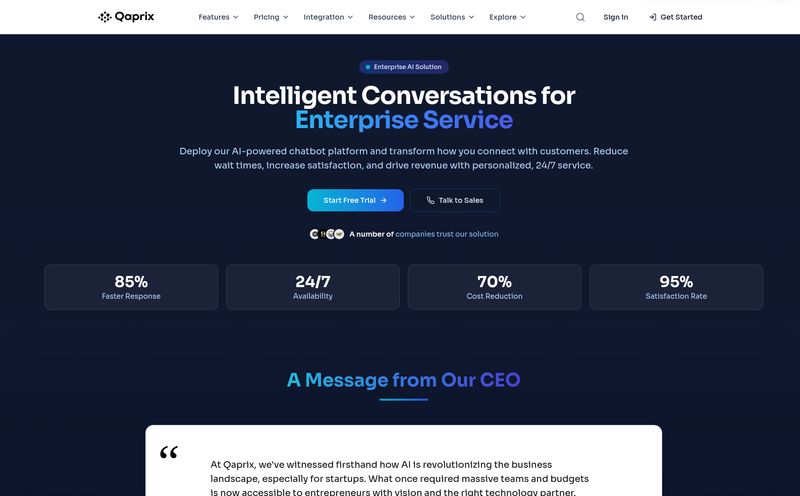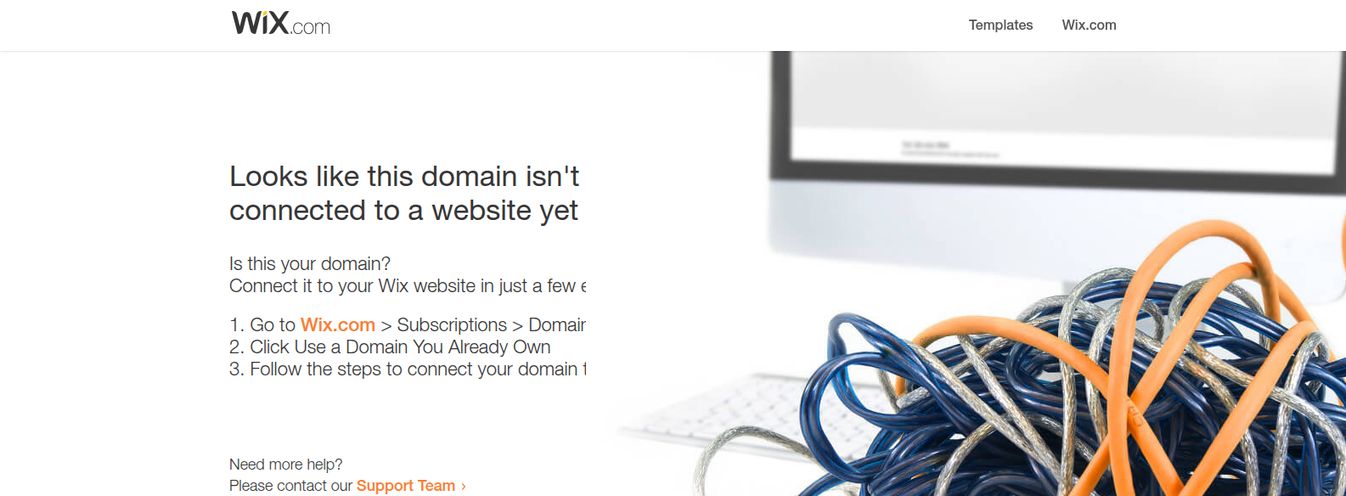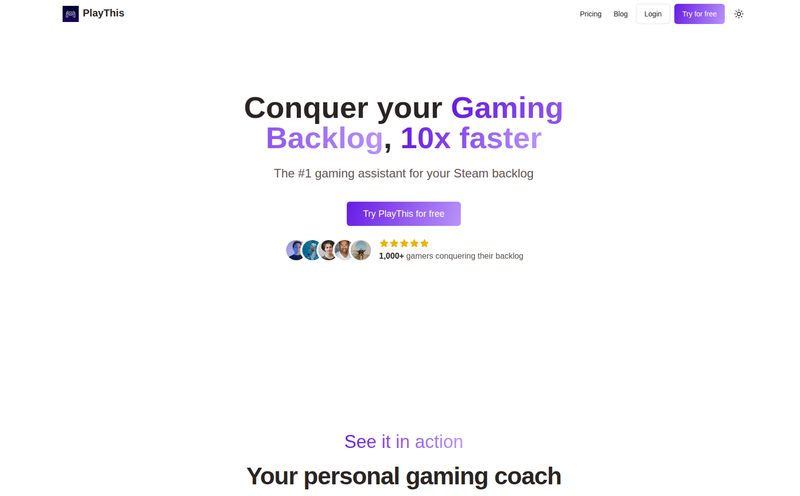If you’ve worked in marketing or sales for more than a week, you’ve lived the nightmare. Marketing spends a quarter creating the “ultimate” guide to something, a deck that’s a work of art, a case study that’s pure gold. They blast it out on Slack. And... crickets. Three weeks later, a sales rep asks you for that one slide from that one presentation from last year. You know, the one with the blue chart. Your eye twitches.
The disconnect is real. It’s a chasm where leads go to die and revenue goals get nervous. For years, we’ve tried to patch it with a Frankenstein's monster of tools: a bit of Dropbox here, a sprinkle of Google Drive there, a clunky internal wiki nobody updates. It’s a mess.
That’s the problem a platform like Seismic claims to solve. It’s been on my radar for a while, making big promises about AI-powered sales enablement. But is it just another expensive piece of enterprise software, or is it the mission control center your revenue team has been dreaming of? I decided to take a closer look.
So What Exactly is Seismic?
Strip away the corporate jargon, and Seismic is essentially a central nervous system for all your customer-facing teams. It’s a unified platform designed to make sure your salespeople have the right content, the right training, and the right insights at the exact moment they need them. It's not just a fancy Dropbox; it's a whole ecosystem.
Think about it like a master chef's kitchen. Instead of running to a dozen different pantries and fridges, everything is perfectly organized, labeled, and ready to go. Seismic aims to be that kitchen for your sales content, playbooks, training materials, and buyer engagement tools. The secret sauce? A hefty dose of AI that supposedly predicts what a seller needs before they even know they need it.

Visit Seismic
The Core Features That Actually Move the Needle
A feature list is just a feature list until you see how it solves a real problem. I’ve seen countless platforms with a million buttons that do nothing. Seismic, however, seems to have a few capabilities that genuinely stand out.
A Content Library That Doesn’t Make You Want to Cry
The heart of Seismic is its Sales Content Management. This is the fix for the “where’s that file?” problem. All your case studies, decks, one-pagers, and whitepapers live in one smart, searchable place. But the real magic is in a feature they call LiveDocs. It allows reps to automatically personalize content—like a pitch deck—with the prospect’s name, industry, and specific pain points. No more clumsy find-and-replace. This alone is a massive time-saver and makes for a much more professional buyer experience.
More Than Just Files: Learning and Coaching
This is where Seismic started to really get my attention. It’s not just a content repository. It has a whole Learning & Coaching module. You can build training programs, run video coaching sessions, and tie learning directly to performance. So, when you launch a new product, the training, the pitch deck, and the talking points are all connected. This closes the loop between knowing what to say and actually saying it effectively. It's a smart move that a lot of competitors miss.
Engaging Buyers in the 21st Century
How do you share that perfectly personalized deck? By emailing a clunky 25MB attachment? C'mon. Seismic leans heavily into what they call Digital Sales Rooms. Think of it as a private, personalized microsite for each one of your prospects. You can share multiple pieces of content, track exactly what your prospect is looking at (and for how long!), and communicate right within the space. For complex B2B sales with multiple stakeholders, this is a game-changer. It turns a messy email chain into a streamlined, professional experience.
The Good, The Bad, and The Pricey
Alright, no tool is perfect. Let's get down to brass tacks. After looking through their materials and reading between the lines of customer stories, here's my take.
The Things I'm Genuinely Impressed By
The biggest win here is the unified platform. Having content, training, and engagement analytics all under one roof is the holy grail for revenue operations. It eliminates the data silos that cause so many headaches. And the AI, while I’m always a little skeptical of AI claims, seems to have practical applications here—recommending the best content for a specific deal stage is incredibly powerful. The social proof is also hard to ignore; landing clients like IBM and Salesforce means you're doing something right. That stat on their site—a 56% reduction in sales cycle length—is audacious, but even if you get half that, the ROI is obvious.
Let's Be Real: The Potential Sticking Points
First off, this thing isn't going to be cheap. Seismic is built for the enterprise, and it’ll have an enterprise price tag to match. This will likely put it out of reach for many smaller businesses or startups. Second, a platform this comprehensive has a learning curve. You don’t just flip a switch and see magic. It requires buy-in from your teams and a solid implementation plan. Finally, the AI is only as good as the data you feed it. If your content is a disorganized mess and your CRM data is dirty, you'll have to clean house before you can expect AI-powered nirvana. Garbage in, garbage out, as they say.
So, What Does Seismic Cost?
Ah, the million-dollar question. Or, more likely, the many-thousands-of-dollars-a-month question. If you go looking for a pricing page on Seismic's website, you’ll find... well, you'll find a "Let's Chat" button. There’s no public pricing.
This is standard practice for enterprise SaaS. Pricing is almost always custom and based on a number of factors: number of users, specific modules you need, level of support, etc. My advice? Don't even think about it unless you're a mid-market or enterprise company with a significant number of customer-facing employees. If you fit that bill, you'll need to schedule a demo and get a custom quote tailored to your organization.
Who Is This Platform Really For?
Let's be crystal clear. Seismic is not for the solopreneur or the 5-person startup trying to get scrappy. This is a serious tool for established organizations that are feeling the pain of scale.
You're a good fit for Seismic if:
- You have 50+ sellers and a dedicated marketing team.
- Your biggest complaint is the lack of alignment and communication between teams.
- You're losing deals because reps can't find content or are using outdated materials.
- You're in a competitive industry where buyer experience and personalization are key differentiators.
If that sounds like you, then the investment might just pay for itself. If not, there are probably lighter, more affordable solutions out there for you.
Frequently Asked Questions About Seismic
1. What is sales enablement, anyway?
In simple terms, sales enablement is the process of giving your sales team everything they need to successfully sell. This includes content (like decks and case studies), tools (like a CRM or a platform like Seismic), training, and data-driven insights.
2. How is Seismic different from a CRM like Salesforce?
They work together! A CRM like Salesforce manages your customer relationships and deal pipeline. Seismic integrates with your CRM to enable your sellers within that pipeline. It serves up the right content and coaching based on the deal information stored in Salesforce. One manages the relationship, teh other empowers the conversation.
3. Is Seismic difficult to learn?
There can be a learning curve, yes. Like any powerful platform, it takes time to get everything set up and for users to get comfortable. However, its success hinges on adoption, so Seismic provides support and training. The key is to have a dedicated internal champion for the platform.
4. Can small businesses use Seismic?
While anything is possible, Seismic is primarily designed and priced for mid-to-large enterprise companies. Smaller businesses might find the cost and implementation effort to be a significant barrier. It's best to be realistic about your budget and needs.
5. What are Digital Sales Rooms again?
A Digital Sales Room is a secure, private web page or microsite that a salesperson creates for a specific prospect or customer. It's a central place to share all relevant documents, videos, and presentations for a particular deal, and to track how the prospect engages with that content.
My Final Take: Is Seismic the Real Deal?
After digging in, I have to say, I'm pretty convinced. Seismic isn't peddling snake oil. It’s a robust, intelligent, and seriously comprehensive platform designed to solve a very real and expensive problem: the chaos between sales and marketing. It’s not a magic bullet, and it requires real investment in both time and money.
But for the right company—one that’s large enough to feel the acute pain of misalignment and has the resources to commit—Seismic could be truly transformational. It’s about more than finding files faster. It's about creating smarter sellers, more engaged buyers, and ultimately, a healthier bottom line. And in this economy, who doesn't want that?



